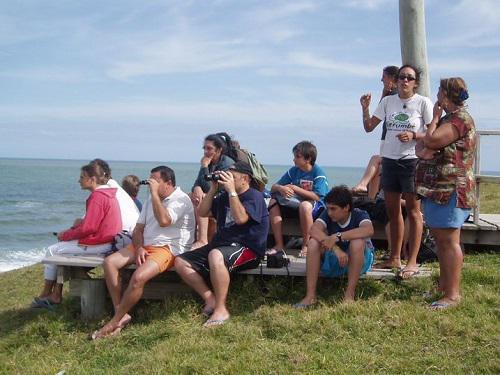Milagros Lopez Mendilaharsu
Towards the Effective Protection of Juvenile Green Turtle Critical Habitats.

Guided visits to the Cerro Verde Area.
Cerro Verde is known as high-diversity spot in Uruguay, harbouring endemic and endangered marine species (mollusc, sharks, sea turtles, sea birds and marine mammals), and serving as a resting, feeding, breeding and nesting site for wide variety of organisms. The proposed marine protected area Cerro Verde is located in Rocha State (34º 58´ S; 54º 58´ W) covering over 510 km2 of a marine-coastal ecosystem. Data gathered by previous studies indicate that an important population of juvenile green turtles utilizes coastal waters of Cerro Verde as a developmental and foraging area. C. mydas has experienced drastic declines in numbers and is presently listed as endangered throughout its range by the IUCN.

Talks at the marine center.
Across the world, there is a growing recognition that MPA’s have a critical role to play in the conservation and protection of marine life and their habitats. But the lack of data on spatial requirements and habitat utilization of green turtles in Cerro Verde hampers the effectiveness of the marine reserve design. Data collected from 2001 to 2003 pointed out that 49.3 % of the green turtles captured by the artisanal fleet died in the nets, thus Cerro Verde was highlighted as one of the 3 sites with greater incidental capture in the country. By conducting this study we pretend to monitor the movements of green turtles through satellite telemetry and gather relevant spatial data to be used during the development of the management plan of the MPA.
Also, this study will provide relevant data in terms of seasonal migrations and possible hibernating behaviours which have never been studied in the region. The communication materials produced by this project will be used to raise awareness among local people and illustrate the benefits of Uruguay’s growing ecotourism. We pretend to encourage community members to valorise these area and natural resources, and show them its relevance to their lives and families. This project will contribute in the development of management plans for the MPA and serve as replicable model for the conservation and sustainable use of the country’s biological diversity.